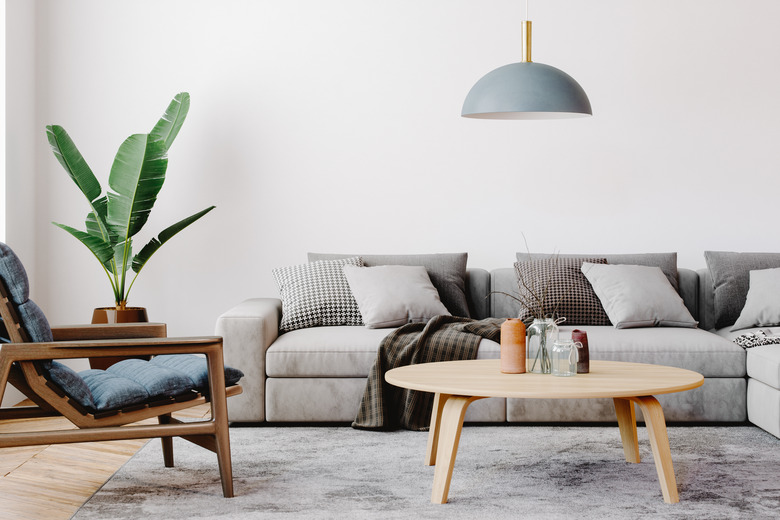How To Get Rid Of A Chemical Smell In New Furniture
We may receive a commission on purchases made from links.
Virtually any type of new furniture may smell like chemicals when you first bring it home, especially if the piece has been wrapped in plastic or otherwise sealed. Substances such as adhesives, fabric treatments, and even finishes could cause the piece to smell for a while, but the good news is, the odor doesn't last forever. Fresh air and time are the best ways to get rid of the odor, while other substances such as baking soda, coffee grounds, or white vinegar help remove it faster.
Smelly Causes for Concern
Smelly Causes for Concern
All kinds of chemicals are used on furniture during the manufacturing process; even handmade items may smell of chemicals such as varnish for a while. Some of the chemicals are potentially toxic, containing volatile organic compounds (VOCs) that may cause dizziness or breathing difficulty. While that's an extreme scenario, it's all the more reason to let any smelly new furniture air out for a while before you put it in place in a room.
Formaldehyde is one of the most common VOC-emitting culprits, and it's found in everything from particleboard to some adhesives and synthetic fabrics. Water- and stain-repellent formulas are often used on upholstered sofas and chairs to help keep them clean, but these typically contain formaldehyde and other chemicals that aren't necessarily healthy for the environment, people, or pets. Fire-retardant treatments used on furniture sometimes also contain harmful chemicals that emit odors. Even paint, stain, and varnish used on a custom-crafted piece may emit odors while the furniture is fairly new, but the odor fades over time.
Air It Out
Air It Out
Furniture needs time to let trapped fumes and odors dissipate. The best time to air out a piece of furniture is when you bring it home. Place the offending furniture in a room or area where it can air out for a few days, such as a screened-in porch or a clean garage with windows or a door that can be left open for hours on end. Outdoor spaces are best since they'll keep the odor completely out of the house, but in a pinch, a spare bedroom with windows and fans will also work.
Remove any loose cushions and pillows and open all drawers and remove them, if possible. Allow the piece to air out for several days during dry weather, bringing it back indoors or otherwise protecting it at night before the temperature drops or any time precipitation is imminent to keep moisture from affecting your new furniture finds. If the piece outgasses in a room you don't use every day, leave a window open and place a box fan in the window, drawing air out of the room. Turn on a ceiling fan or other fan to keep the air circulating. Set the furniture in the desired room once it no longer smells bad.
Deodorizing the Furniture
Deodorizing the Furniture
Deodorizing the smelly furniture is another way to speed up the odor-removal process. Baking soda is an excellent natural deodorizer for upholstered surfaces, fabrics, cushions, and pillows. Sprinkle the baking soda over the surface, let it sit for an hour or so and then vacuum the powder. Repeat if necessary.
For furniture with compartments, such as a cabinet or dresser, wad up some newspaper and set it inside, then close the doors and/or drawers. Remove the paper after a day or so and repeat the process to remove more odor. A bowl of dry coffee grounds set inside the cabinet or drawers also absorbs odors in much the same manner. Once you've done a paper or coffee-ground treatment a couple of times, leave the cabinet door or drawers open for a day or two to remove even more odor.
A spray of equal parts white vinegar and water also comes in handy for removing odors from upholstered furniture, as long as the furniture's care tag suggests moisture is OK for the material. Lightly mist the surface with the vinegar and water mixture and allow it to air dry. Repeat over all accessible sides of cushions and pillows.
